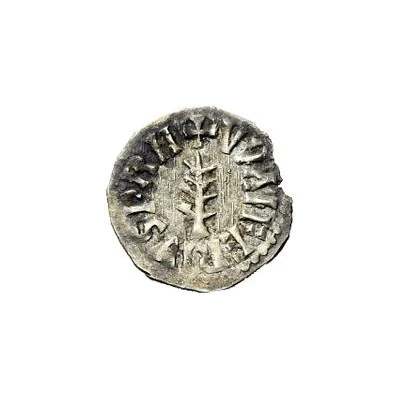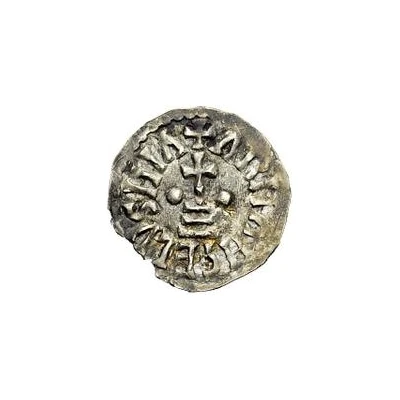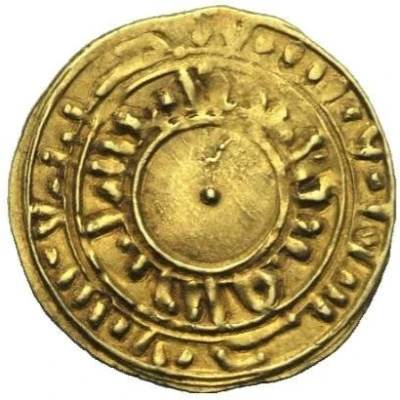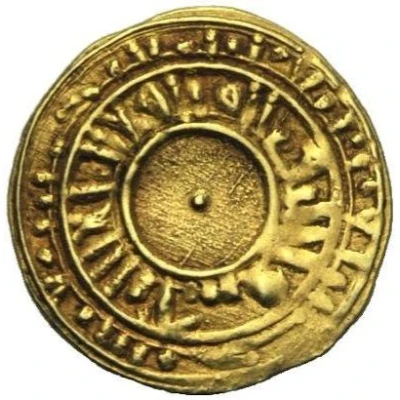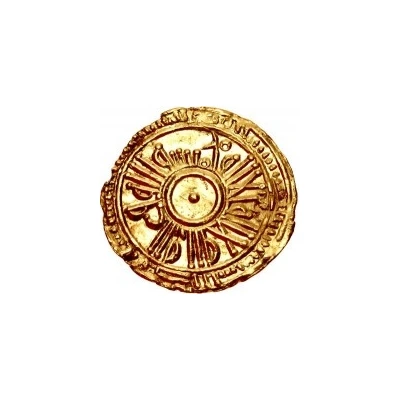
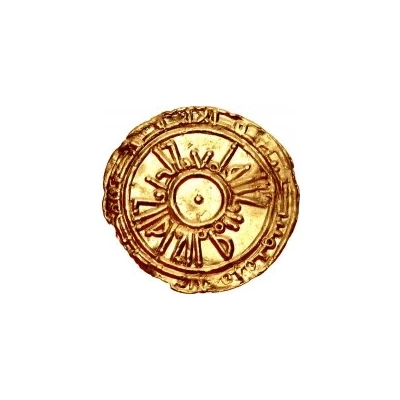

© Classical Numismatic Group, Inc.
Tarì anonymous
| Gold | 1.01 g | 16 mm |
| Issuer | Principality of Salerno (Lombard Kingdom) |
|---|---|
| Type | Standard circulation coin |
| Years | 946-1027 |
| Value | 1 Tarì = ¼ Solidus |
| Currency | Solidus (839-1077) |
| Composition | Gold |
| Weight | 1.01 g |
| Diameter | 16 mm |
| Shape | Round (irregular) |
| Technique | Hammered |
| Orientation | Variable alignment ↺ |
| Demonetized | Yes |
| Updated | 2024-10-10 |
| Numista | N#150239 |
|---|---|
| Rarity index | 100% |
Reverse
Dot in circle surrounded by two layers of pseudo-Kufic legend.
Script: Arabic (kufic)
Lettering:
الشخص الذي تمجد دين الله ، أمير المؤمنين
يستدعي الإمام معاد أن يدعي وحدة الله الأزلية
Translation: The one who exalts the religion of God, Commander of the Faithful. The Imam Ma’add summons to profess the eternal unity of God.
Comment
This coin is imitating an al-Mu'izz li-Din Allah ¼ dinar of the Fatimid Caliphate. While the legend is not certain, a reasonable assumption is that it meant to be the same as the coin it is imitating.Variations of the lettering exist. While the exact date-range is not known, this coin was probably not made after the reign of Guaimar IV (999-1027), since the Tarì pieces after that ruler have Latin legends in the secondary line on inscription of the obverse.
Another example:
© Classical Numismatic Group, Inc.
Interesting fact
The Tarì anonymous (946-1027) from Principality of Salerno (Lombard Kingdom) made of Gold weighing 1.01 g is a rare and valuable coin, with only a few known examples surviving to this day. One interesting fact about this coin is that it features a unique blend of Christian and Islamic influences in its design, reflecting the cultural exchange and artistic fusion that characterized the Lombard Kingdom during that time period. The coin's obverse side bears an inscription in Latin, while the reverse side features an Arabic inscription and a depiction of a mosque, highlighting the multicultural nature of the Principality of Salerno. This coin serves as a fascinating example of the rich cultural heritage and artistic achievements of the Lombard Kingdom, and its rarity and historical significance make it a highly sought-after collector's item among numismatists and historians.
